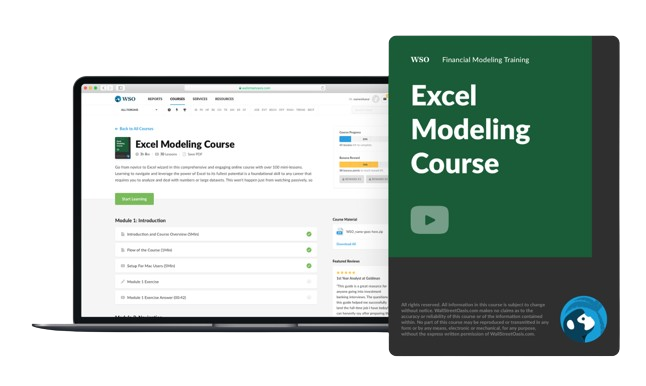Expense Ratio
Refers to cost of owning a mutual or exchange-traded fund
What is an Expense Ratio?
The cost of owning a mutual or exchange-traded fund is expressed as an expense ratio (ETF). It is sometimes known as the management expense ratio (MER)
It calculates how much of a fund's assets are spent on administrative and operational costs. It divides a fund's operating expenses by the average dollar value of its assets under management to get it.
The ER is a ratio that compares mutual fund operating costs to assets. After expenses are considered, investors look at the ER to decide if a fund is a good fit for them.
The gross expense ratio, net expense ratio, and post-reimbursement expense ratio are all examples of expenditure ratios.
Index funds and other passively managed funds generally have lower ER than actively managed funds. Two examples are provided below, one for each.
Formula for ER is:
Expense Ratio = Total Fund Costs/ Total Fund Assets
Total fund costs are divided by total fund assets to arrive at the ER. So what Can the ER Tell You?
This ratio calculates how much you'll pay to buy a fund over a year.
Understanding Fund Operating Expenditures
The fund's operating expenditures vary, but the expenses within the fund are relatively consistent.
For example, a fund with low expenses will likely continue to have low costs. This is because the fee paid to a fund's investment manager or advisor accounts for most operating expenditures.
Other charges include recordkeeping, custodial services, taxes, legal fees, and accounting and auditing. The fund's expenses are included in the fund's daily net asset value (NAV) and do not appear as a separate charge to shareholders.
ERs can be changed in a variety of ways. The ER is most commonly concerned with overall expenses. However, consumers occasionally wish to know the difference between gross and net expenses.
Components of an Expense Ratio
Costs Included in the ER:
- Management fee
- Legal expenses
- Transfer agent fees
- Marketing fees
A portfolio management firm receives a management fee from an investor in exchange for managing money on their behalf. The price is intended to compensate fund managers for their work and expertise in selecting and managing securities for their client's portfolios.
Management fees, ranging from 0.5 to 2.0 percent, account for a large portion of the total spending ratio. Because a higher management price reduces their investment return, investors choose portfolio management firms that charge a lower management fee.
In managing shareholder funds, investment funds may incur some legal charges. For example, legal expenses are paid to lawyers for the processing of documentation such as stock certificates, SEC filings, licenses, and regulatory compliance.
The payments can also go to lawyers representing the corporation in legal battles with regulators, competitors, investors, and other stakeholders. Legal expenses, unlike management fees, account for a minor portion of the total expense ratio.
Transfer agent fees are paid to transfer agents, who could be a bank or trust corporation tasked with keeping track of investor data.
Customers' accounts must be updated regularly to reflect changes in their investments in the portfolio firm, whether they sell or buy part or all of them.
Transfer agents are in charge of such tasks to keep track of daily changes in account statements. In addition, they handle purchase requests, give certificates to new owners, deal with stolen or lost certificates, and function as a link between fund investors and the corporation.
Marketing fees are costs incurred by an investment fund to raise extra cash for investment by promoting its products and services to potential investors.
The production of advertising banners, the printing and distributing of pamphlets to potential shareholders, and sponsoring advertisements to the target market are all funded by these fees.
The more money an investment fund has, the more portfolios it may invest in, resulting in a higher management fee for the fund managers. The spending ratio includes marketing charges, which comprise a small fraction of the total.
Expense Ratio vs. Management Fees
Management fees are charged by mutual funds to cover operating costs such as the cost of recruiting and retaining investment advisors who manage the funds' investment portfolios and any additional management fees not covered by the other expenses category.
Maintenance fees are another term for management fees.
Other than the price of buying and selling securities and paying the investment team to make the buy/sell decisions, a mutual fund incurs various operating fees.
Marketing, legal, auditing, customer service, office supplies, filing, and other administrative costs are among the various operational fees.
While these fees have nothing to do with investing decisions, they are essential to ensure that the mutual fund is administered correctly and by the Securities and Exchange Commission's (SEC) rules.
All direct expenses involved in managing the investments, such as hiring the portfolio manager and investment team, are included in the management fee.
The cost of employing managers accounts for most management fees, ranging from 0.5 percent to 1% of the fund's assets under management, or AUM.
While this proportion appears insignificant, it represents millions of dollars for a mutual fund with a $1 billion AUM. Highly talented investment advisors can command fees that increase a fund's overall ER relatively high, depending on management's reputation.
The management fee does not include the cost of buying or selling any security for the fund. Instead, these are transaction costs, which are stated in the prospectus as the trading expense ratio, and it is calculated by adding the operational and management fees together.
Expense Ratios and Fund Performance
The ER is the most important metric for determining a fund's performance. It analyzes how effectively a fund is managed in general. All operations-related expense components are included in operating expenses, but transaction-related charges are excluded.
Management fees, administrative services, custody transfer, shareholder services, directors' fees, legal and audit fees, and interest costs are all included in the list of operating expenses utilized in the computation.
Brokerage charges are not included in the total operating expenditures of a fund. The reason is straightforward. They're classified as transaction-related expenses.
Costs are being incurred that were not anticipated. For example, brokerage fees vary based on how frequently the fund manager buys and sells securities in the portfolio.
The fund's extensive discount threshold schedule determines upfront sales charges, while the timeshares choose back-end charges are held. As a result, none of these expenses are factored into the ER of the fund.
These are typically included in the prospectus of a mutual fund. In addition, as seen in the far right column, this information is released weekly, monthly, or quarterly in various financial magazines.
The ER decreases as more portfolio returns are made accessible to the holder and increases when the return to the holder drops.
Given a mutual fund's economies of scale, it's reasonable to predict that the ER will decrease as the fund's assets expand.
In reality, many funds don't need to cut their expenses as much as they thought they would to lower their ratios and are not reduced as a percentage of asset growth in the fund.
The Board must keep an eye on spending and make sure they aren't out of hand.
An ER is usually a selling point. So when choosing a somewhat low-yielding bond fund to invest in, this is very crucial to consider.
Index Funds vs. Actively Managed Funds
An index fund's ER and an actively managed fund's ER often differ dramatically.
The ER of index funds, which are managed passively, is very low. These funds replicate a specific index. As with the funds they mirror, the related management fees are reduced due to the lack of active management.
With an ER of 0.03 percent yearly, the Vanguard S&P 500 ETF, an index fund replicating the Standard & Poor's (S&P) 500 Index, has one of the lowest cost ratios in the industry. For every $10,000 invested, investors are charged only $3 per year at this level.
With an ER of 0.86 percent or $86 per $10,000, the Fidelity Contrafund is one of the largest actively managed funds on the market.
1. AB Large Growth Capital Fund
The fund primarily invests in equity securities of a small group of prominent, well-managed, high-quality U.S. corporations. In addition, it mainly invests in domestic equity shares of companies chosen by the fund's Adviser for their potential for growth in various market areas.
With a net cost ratio of 0.61 percent, the AB Large Cap Growth Fund is actively managed. In addition, the fund now features a 0.01 percent fee waiver and expenditure reimbursement.
The fund's management fees are 0.50 percent. The fund generally invests in large-cap U.S. stocks with solid growth prospects. It usually consists of 50 to 70 holdings.
2. T. Rowe Price Equity Index 500 Fund
Its goal is to mimic the S&P 500. It has a 0.19 percent gross and net expense ratio. In addition, it has a 0.06 percent management charge.
Expense Ratio FAQs
It measures how much of a fund's assets are spent on administrative and other operating costs. Because a cost ratio diminishes a fund's assets, investors earn lower returns.
An ER is crucial because it tells an investor how much they will pay in charges and how much their returns will be decreased by participating in a given fund.
The smaller the expenditure ratio, the better, as investors get a better investment return.
The ER is calculated by dividing total fund costs by total fund assets.
Expense ratios for mutual funds that invest in major firms should not exceed 1%, while ER for funds that invest in smaller companies should not exceed 1.25%.
There are funds with ER higher than this, which can be classified as either pricey or as providing a unique service that justifies their high cost.
The ER should be as low as possible for debt & fixed income funds as the revised rates of returns will be compromised by a higher than average ER.
For equity funds, a lower ratio is preferred. Still, if a fund can outperform the industry average and benchmark after deducting the expense ratio, it makes sense to buy it.




or Want to Sign up with your social account?